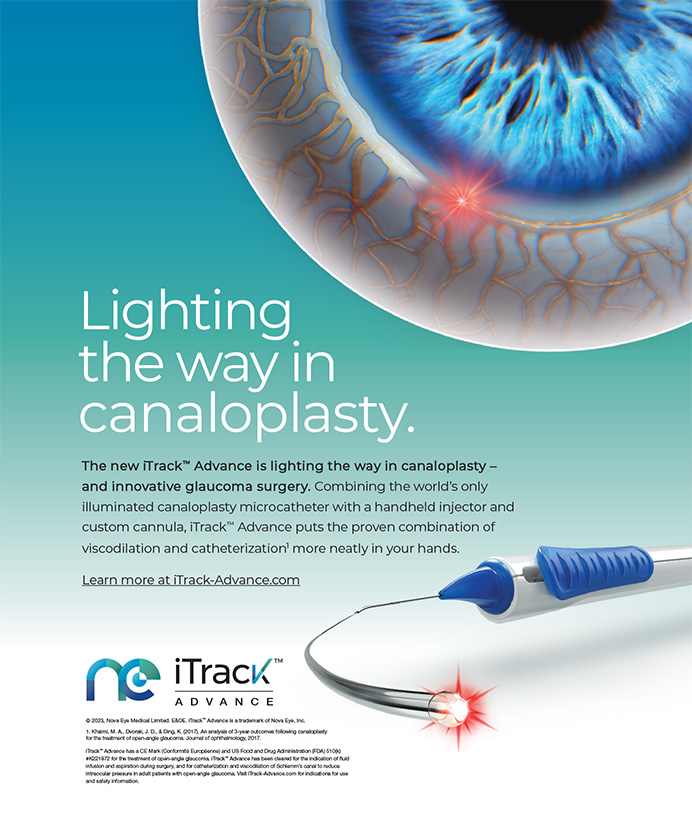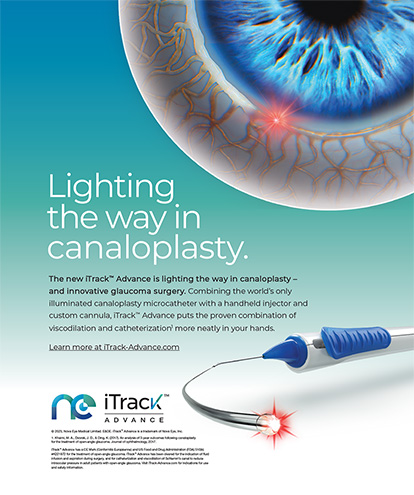Patients with diabetic eye disease may be concerned when they hear that their diabetes has affected their vision. It can be challenging for cataract and refractive surgeons to answer patient questions about possible ocular complications and how they are treated. A few answers about pharmacologic and surgical innovations introduced in recent years may help calm the worries of patients with diabetic eye disease.
PHARMACOLOGY
An important innovation in the treatment of diabetic retinopathy (DR) and diabetic macular edema (DME), anti-VEGF agents can preserve visual acuity and even significantly improve vision in most patients with DME.1,2 Three anti-VEGF agents are widely used to treat DME: ranibizumab (Lucentis, Genentech), aflibercept (Eylea, Regeneron), and bevacizumab (Avastin, Genentech); DME is an off-label indication for bevacizumab.
A Diabetic Retinopathy Clinical Research Network (DRCR.net) study in patients with DME and baseline visual acuity of 20/50 or worse demonstrated that patients receiving ranibizumab or aflibercept had better outcomes than those receiving bevacizumab, but all three agents offered significant visual and anatomic improvements over focal laser treatment.2
Anti-VEGF therapy can also reduce vision-threatening complications associated with proliferative DR (PDR).3 Untreated PDR can cause vitreous hemorrhage and fibrovascular proliferation and lead to tractional retinal detachment or neovascular glaucoma. Another DRCR.net study showed that ranibizumab was comparable with panretinal photocoagulation (PRP) in treating PDR and associated with a lower rate of vitrectomy.3
Clinical trials in DME found that DR severity could be decreased with anti-VEGF treatment. A DRCR.net study is investigating anti-VEGF therapy to prevent worsening of DR, including progression to PDR.4
Another option for some patients with DME who do not respond sufficiently to anti-VEGF treatment is steroid therapy. The dexamethasone intravitreal implant (Ozurdex, Allergan) and the fluocinolone acetonide intravitreal implant 0.19 mg (Iluvien, Alimera Sciences) have been approved by the FDA for treatment of diabetic eye disease; these treatments are also used across Europe. Many retina specialists initiate anti-VEGF or laser therapy before administering steroid therapy because of the complications associated with steroid use, including cataract formation and IOP increase. For some patients, however, steroid therapy can be a reset button that calms inflammation and allows them to respond to other therapeutic pathways.
SURGICAL INNOVATIONS
Both of these innovations have enhanced retina specialists’ ability to perform surgery in diabetic patients. Modern vitrectomy platforms allow surgeons to perform minimally invasive, sutureless outpatient surgery with short recovery times. These platforms offer a range of small-gauge tools, including vitrectors, forceps, lasers, picks, diathermy, and scissors.
Representing a significant innovation, valved trocars prevent fluid egress and vitreous prolapse. In surgery in diabetic patients, when bleeding can be a significant issue due to neovascularization, valved trocars create a closed system to maintain hemostasis.
Diabetic tractional retinal detachments are challenging to address in surgery. Visualization is crucial to segment and delaminate the preretinal fibrotic membranes causing traction on the retina. Bimanual retinal surgery can help to address these challenges.
In traditional vitrectomy, one hand manipulates a light pipe and the other manipulates the vitrector, laser, or forceps. The use of chandelier illumination and/or lighted instruments eliminates the need to hold the light pipe. The surgeon can create countertraction using two instruments, such as a lighted pick and forceps.
CONCLUSION
Diabetic eye disease can be scary for patients. Educating them on the recent innovations in treatment of diabetic eye disease can leave them feeling empowered and ready for referral to a subspecialist in a timely manner.
S.K. Steven Houston III, MD



